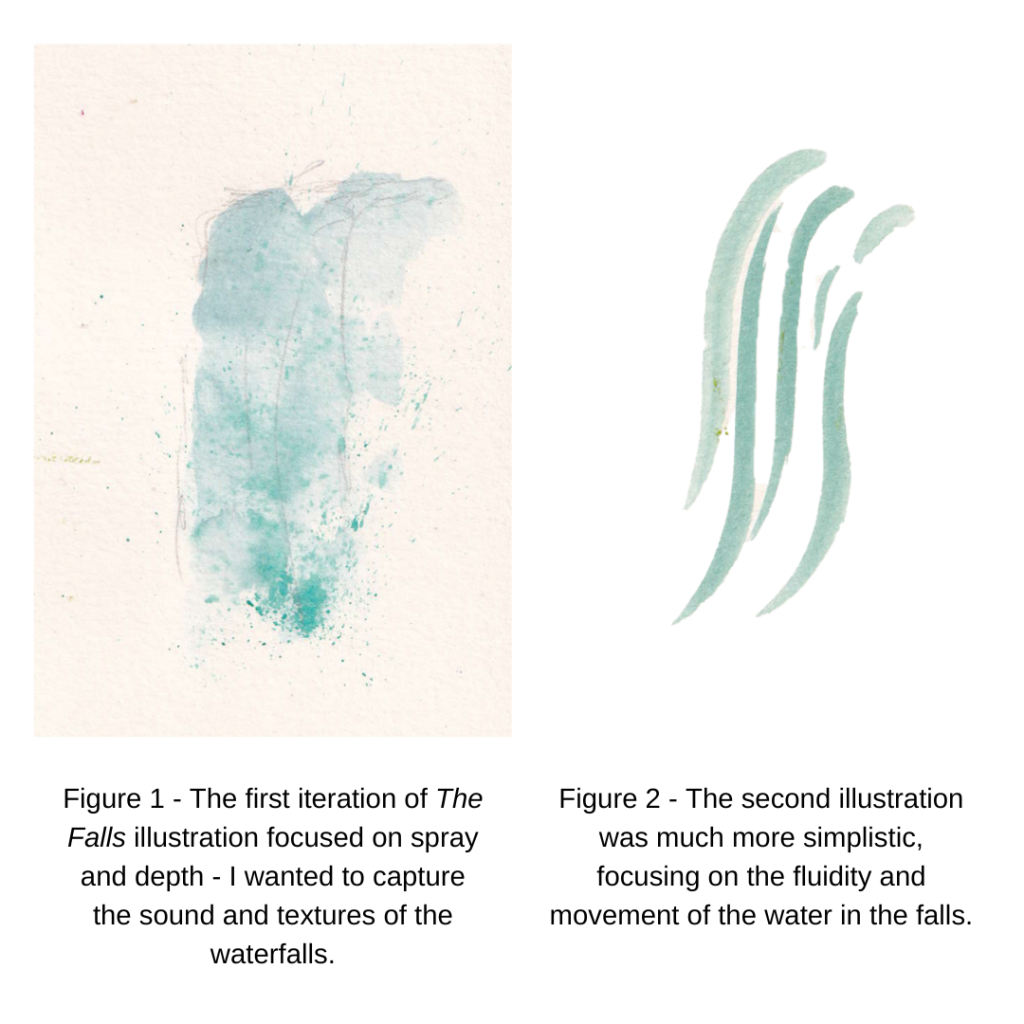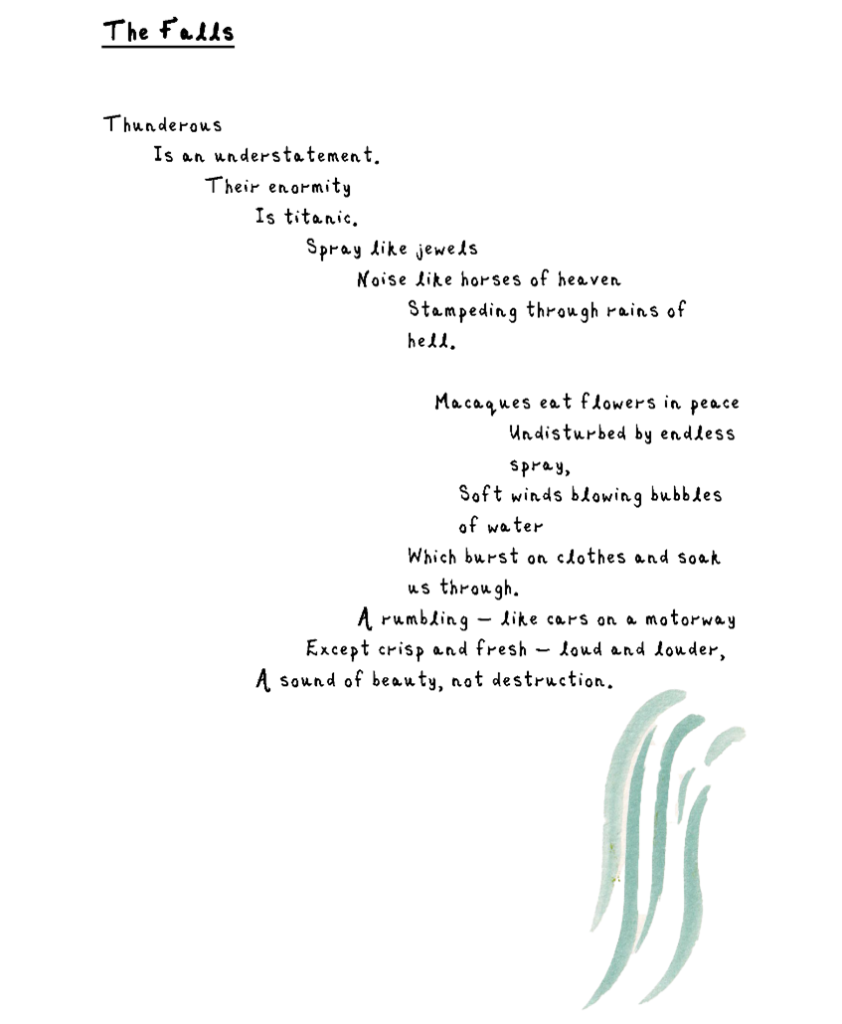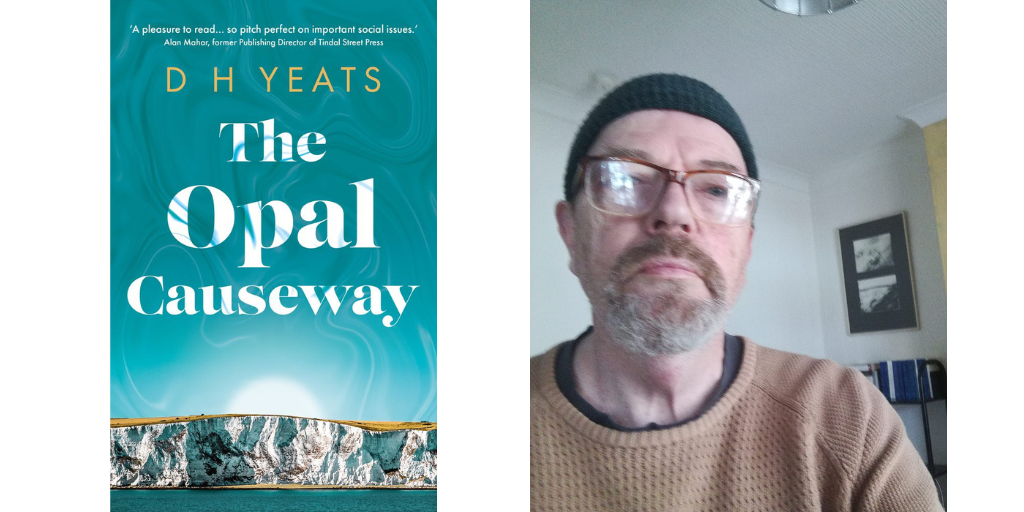By Alicia Hayden
If you’d asked me a year ago to write poems about Zimbabwe; a country I’d never been to, on a continent I’d never been in, I’d have been stumped. Perhaps I’d have turned to Google and tried to get an idea of the place through images and videos. I might have watched some documentaries based in Zimbabwe, and researched the wildlife that resides there. But whatever I’d written would never have lived up to the beautiful country which is Zimbabwe.
In May 2022, I crowdfunded to fly out to Victoria Falls, Zimbabwe, to produce a film about a Zimbabwean wildlife artist called Tichaona Ncube and document his first solo art exhibition. Planning a film shoot is an intense process. It involves everything from strict budgeting and scheduling and risk assessments, to shot-logging and planning which images you want to capture as part of the film.
While out in Zimbabwe, I tried to soak in as much of the scenery, colours and landscape as possible. I knew I wanted to animate parts of The Watchman, so, taking notice of the colours we encountered while out in Victoria Falls was important. It meant I could make my animations as colourful and authentic as possible. The sand around Chinotimba was the colour of the crumbling clay cliffs which line Sidmouth bay in Devon, Tich’s friend’s car, used to ferry Tich’s art to the exhibition site, was a vibrant blackbird egg blue and the lizards frequenting the hostel where we were staying had electric orange neck stripes, like racing cars.
If there’s one thing I wasn’t expecting after returning from Zimbabwe, it was how much colour I would start to see everywhere. This was a direct result of paying more attention to the huge variety of hues, shades and vibrancies that fill the natural world like gumdrops in a jar. I wrote to a friend shortly after returning, describing the process of just seeing everything in shades and hues; amazing and overwhelming all at once. My life was suddenly in technicolour!
Colour is so important to me. Something I hadn’t realised the full extent of until after my return to the UK. Starting the edit of The Watchman was a challenging process. No one really tells you how to go about starting to make a film and, when you’ve got hundreds of video clips, it can be overwhelming to know where to begin; very much like writing a book. So, I broke my film into colours: the ‘Master Interview’ with Tich was ‘mango’, any footage with Tich’s children where he was teaching them to paint was ‘rose’, the elephants were ‘brown, and the interview with Tich’s Uncle Stephen was ‘sky blue’ (as it was filmed by a river). And all the while I was editing, my brain was taking in these colours, trying to turn them into a script to accompany the film. Enter ‘mini-collection’!
I first started creating mini-collections over a year ago. I never intended for them to be a long-running series. The first, Tales From The Forgotten Wood, was a form of escapism after a stressful week; forests are a haven for so many species of wildlife, particularly ancient woodlands and they feel inherently magical to me. The poems were all written in an afternoon on a walk around a particularly beautiful wood in Cornwall, and illustrated later that evening.
The collection was quick to put together, acting as a way of expressing my feelings and emotions at that moment in time. My wider hope was that it would show people the inherent beauty and strangeness of the natural world on our doorsteps. The fact is, there’s wildness and wilderness wherever we go and wherever we look; we just have to be prepared to see it. I wanted the mini-collection to inspire people to go out into their local patches and immerse themselves in nature.
And naturally, this first collection led to a second and then a third. Now, there are seven! Seven mini-collections, all looking at different places and spaces in the natural world, but it’s only now, with this seventh instalment, I’ve delved outside the UK, returning to Zimbabwe.
Colours Burst And Elephants Roar initially started as a handful of poems inspired directly by events and animals encountered while on my shoot in Zimbabwe. The gecko which hung out on the beam in our bedroom inspired one of the first poems I wrote: I, the Gecko. Using simple language and a rhyming scheme, I wanted to have a distinct rhythm, conjuring the feeling of the gecko intimately watching us from the beam above. Returning to the motif, tip, toe, tip, toe to add playful suspense, showing how the gecko is going unnoticed both by us, but also by its unsuspecting prey, the mosquito. I, the Gecko was one of the first poems I wrote as part of the collection, and it set the tone: playful and colourful. This is something I continued in the other poems, most notably in the final poem Colours Burst And Elephants Roar. I wanted to make the colours pop, and bring Zimbabwe vividly into the mind of the reader; the colours which stood out for me while filming in Victoria Falls finally had a place in this poem. I also wanted to give the animals featured in the poems imagined voices, contributing to the overall playful feel:
Sand.
Sand and dust, the colour of baking days,
Pinpricked with lemon-greens, sharp reds,
The mango-underside of a lizard
Scuttling (they didn’t see me, they didn’t see me).
All my mini-collections are illustrated, as I love to combine artwork with writing. For the first few mini-collections, I restricted myself to keeping the illustrations on a black-and-white theme. I wanted the illustrations to look sketchy, like doodles on the side of a sketchbook or diary. However, it was my fourth mini-collection, Every Dune Is A Mountain, which changed this mindset. This mini-collection was produced in partnership with The Lincolnshire Wildlife Trust and Dynamic Dunescapes and had the aim of encouraging more people to understand and connect with sand dunes. The collection wanted to showcase their beauty and diversity and I felt I couldn’t do this unless I made all of the illustrations full-colour. I stuck to using watercolours, trying to bring a softness to the illustrations. This is something I built on with the following three mini-collections, honing the loose, colourful, minimalistic style. Colours Burst And Elephants Roar sees trees and stars drawn as outlines, alluding to their detail. Unlike previous mini-collections, some of the illustrations for this mini-collection went through different designs, most notably the artwork accompanying The Falls.
 The Falls is a poem reflecting on the first moment I saw Victoria Falls. The grandeur, noise and utter enormity was unlike anything else I’d seen and I wanted to reflect this, using dramatic language: rains of hell and titanic. The form of poems on a page is important, giving the reader information about how to read the poem, and generating a sense of mood. I wanted The Falls to reflect the shape of the waterfalls, the ebb and flow and the constant movement of water; the lines of the poem moving gently backwards and forwards across the page.
The Falls is a poem reflecting on the first moment I saw Victoria Falls. The grandeur, noise and utter enormity was unlike anything else I’d seen and I wanted to reflect this, using dramatic language: rains of hell and titanic. The form of poems on a page is important, giving the reader information about how to read the poem, and generating a sense of mood. I wanted The Falls to reflect the shape of the waterfalls, the ebb and flow and the constant movement of water; the lines of the poem moving gently backwards and forwards across the page.
Consequently, the illustration needed to complement the layout of the writing on the page. My initial drawing was too dense. It didn’t guide the eye with the layout of the poem, taking away from its form. It felt heavy and static, rather than flowing and free. My second iteration was more simplistic, focusing on a few lines and alluding to spray and the fall’s magnitude, rather than trying to literally represent it. This illustration was much more appropriate, following the same gradient as the text, without distracting from the content of the poem.

While editing The Watchman, I realised it was important to have my voice interweaved alongside Tich’s: telling the story of two artists, and their shared goal to educate people about wildlife through art and artivism. My decision to author the film required me to write and recite a script, narrate the film from my perspective, and mix it with Tich’s voice recorded in interviews and footage filmed while in Zimbabwe.
Script writing for films is unlike any other writing form I’ve delved into, as you’re trying to remain poetic and scientific, while minimising word use and avoiding overly scientific or complex jargon. Any specialist words, such as artivism, must be defined concisely and repeated frequently, to ensure the audience remembers and understands these key topics or words. My script went through around 13 rewrites, trying to hone the writing so all the key topics throughout the film were mentioned regularly, keeping true to my natural rhythm of speech and language I’d use in conversation, telling the story of The Watchman.
My script was colour-coordinated, so I could pinpoint the themes throughout and check at a glance that I was covering everything. Performing the script was really enjoyable, and I delivered it in as few takes as possible, with the hope of keeping it sounding natural and conversational. Ultimately, I hope that, when watching the film, it’s not obvious I had a script at all!
Editing is an awful lot like writing a book. There are setbacks and there are problems. Like all artistic endeavours, films and editing are subjective; not everyone will like the story you’re telling, or see what you’re trying to do. So it’s a case of taking on the feedback which resonates with you, and being selective about how you apply that to the project you’re working on, be that written or visual. Ultimately, whatever you create, create it for you!
(c) Alicia Hayden, 2022
Read the latest issue of Write On! (15) magazine online here.
You can hear great new ideas, creative work and writing tips on Write On! Audio. Find us on all major podcast platforms, including Apple and Google Podcasts and Spotify. Type Pen to Print into your browser and look for our logo, or find us on Anchor FM.
*****
If you or someone you know has been affected by issues covered in our pages, please see the relevant link below for information, advice and support: https://pentoprint.org/about/advice-support/



